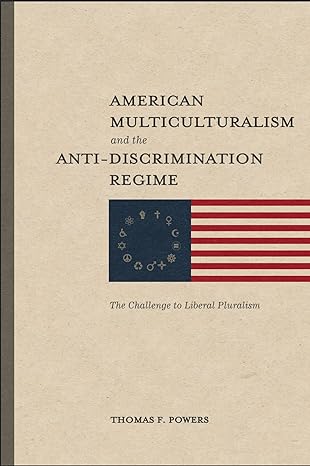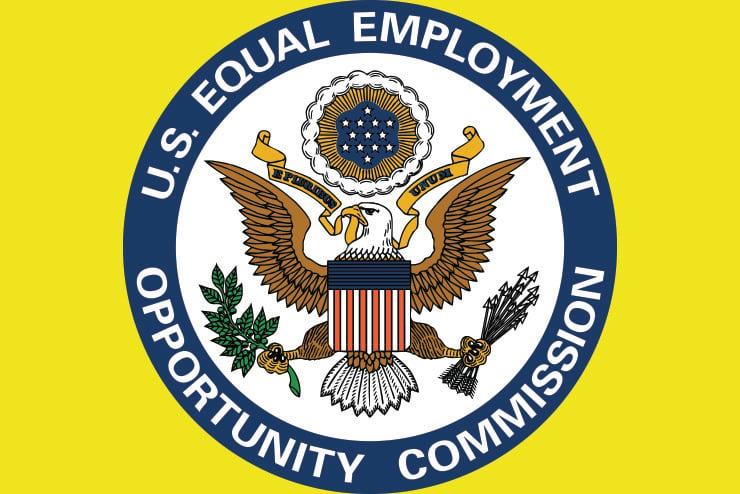The 1960s civil rights laws have metastasized into a network of agencies that police newfound forms of
discrimination.

American Multiculturalism and the Anti-Discrimination Regime: The Challenge to Liberal Pluralism
by Thomas F. Powers
St. Augustine’s Press
475 pp., $40.00
Much ink has been spilled—and pixels illuminated—on the unintended and far-reaching effects on American law and institutional practice of the 1964 Civil Rights Act and the 1965 Voting Rights Act. Thomas Powers has now given us the definitive study on the transformative ramifications of the 1960s civil rights legislation. He meticulously plows through the myriad mechanisms used to regulate behavior, speech, and even thought.
The end result is a convincing exposé of the intellectual sources of this malevolent movement. Along with Philip Hamburger’s work on administrative law (such as The Administrative Threat), Powers provides an expert summary of how radicals hijacked the corpus of American law during the course of the civil rights revolution.
American Multiculturalism describes how they imposed the antidiscrimination regime via a two-part campaign. First was the legal revolution that extended from those civil rights acts. The Supreme Court stretched the purview of civil rights to all corners of American law, and every level of government followed the relentless production of more laws that extended civil rights even further. But the legal regime alone was insufficient to carry the revolutionary day. Schools mobilized multicultural educational programs teaching the radical philosophical justification and cultural training required to make Americans more prone to accept this shift in American law.
Powers carefully summarizes the gist of the educational theory of James A. Banks, who he sees as the single most influential scholarly figure in transforming America into a multiculturalist country. Banks obtained massive influence because he avoided the muddleheaded verbiage of the postmodernist allies of multiculturalism. Instead, he wrote as a straightforward education theorist, endeavoring to make practical change in how children are taught about their society, culture, and identities. His rhetoric often portrayed his work as merely reformist, but he aimed steadily toward a radically democratic and revolutionary end.
The multiculturalism Banks advocates constitutes a new moral order oriented around a new set of key categories: identity, inclusion, recognition, respect, and equity. Banks’ vision is not really about diversity, despite his constant invocation of this term. It is about advancing a particular social and political order. In his vision, all discrimination is prohibited and vigorously eradicated by state power. The emphasis of the last sentence is on the word “all.” It is irrelevant whether the discrimination takes place in the public sphere or the private sphere, whether the agent doing the discriminating represents an institution, the state itself, or is just an individual citizen. It matters not whether the discrimination can be empirically shown to produce any broad harmful effect on individuals or society.
The antidiscrimination revolution aims to legislate the philosophical principles of multiculturalism into reality. From the beginning, this meant injecting antidiscrimination law not only into public life but also into the private realm. Focusing solely on the public sphere would not have permitted the thoroughgoing transformation of American society desired. Antidiscrimination law thus necessarily reaches well beyond the empirical level of action and speech. It seeks to police the thinking of citizens as well.
Legislators and jurists are constructing a new form of law to complete this revolutionary transformation. Powers calls it “a hybrid of civil and criminal law.” Mere criminal law stops at regulating external behavior. This new antidiscrimination legal realm extends intimately into the human personality. The goal is a kind of leftist Sharia, “a … very Western, secular, and up-to-date alternative to a Ministry for the Propagation of Virtue and the Prevention of Vice.”
Powers meticulously explains the march through the legal institutions. Title VII of the Civil Rights Act colonized the world of work. It quickly metastasized from the prohibition of discriminatory practices in hiring. Soon, it included myriad mechanisms for holding employers liable not only for virtually anything their employees might do that can be defined as discriminatory but also for the actions of contractors, vendors, and customers at work sites.
Next, a blob of diversity training and corrective-measures regulations emerged to engulf all employment in the U.S. It is the regime’s method for giving employers ways to avoid at least the most severe sanctions by endlessly propagandizing their employees. Title IX engaged in a similar cancerous invasion of education. Antidiscrimination thus became the new overlord of the key American institutions of work and school.
In exacting detail, Powers walks the reader through the various governmental and legal layers of the antidiscrimination regime. He notes that Ibram X. Kendi’s call for a Department of Anti-Racism betrays an ignorance that much more than this already exists. There is the Department of Justice’s Civil Rights Division, the Civil Rights Commission, and the Equal Employment Opportunity Commission at the top of this apparatus. Four more layers spread out below this tip of the antidiscrimination iceberg, touching every single federal institution and agency. There is an office of civil rights in every federal agency.
A recent Biden administration executive order also created “Agency Equity Teams” to partner with those offices in antidiscrimination work. The Office of Federal Compliance Programs of the Department of Labor ensures that any business seeking federal contracts adheres to the maze of antidiscrimination law. Finally, the major federal agencies have an Office of Small and Disadvantaged Business Utilization that funnels money to businesses recognized as “disadvantaged.”
But there’s more. The Department of Education’s Office for Civil Rights and other DOE agencies, such as the Minority Science and Engineering Improvement Program, the Office of Special Education and Rehabilitation Services, and the Women’s Educational Equity Program, ensure the antidiscrimination regime’s thorough colonization of the education sphere. Other antidiscrimination offices exist within the Departments of Agriculture, Commerce, Housing and Urban Development, Health and Human Services, and numerous others. The Biden administration has recently added still more and is likely to push ahead in these efforts if it wins a second term.
The original civil rights legislation expanded to cover more and more protected classes. The thrust of this legislation was meant to be applied narrowly to blacks, especially in the South. In short order, the group expanded, first to the elderly, then to linguistic minorities, and then the disabled. Now this revolutionary ideological remaking of the American legal structure encompasses sexual identity minorities of every stripe. More than 30 kinds of discrimination are currently prohibited in America, including discriminating against people with criminal records, welfare users, and drug addicts.
The emergence of the bizarre, reality-rejecting doctrine of “disparate impact” after the passage of civil rights legislation was a singular moment in American legal history. Complicated reality gave way to crude moralizing. Any inequality along group categories is now sufficient to prove discrimination and, therefore, the need for remediation. The concept fits hand-in-glove with the theoretical emergence of notions of systemic or institutional racism. When evidence of empirical discrimination disappears, state power looks for it elsewhere, in a fantasy world of invisible structures and ghostly forces.
Disparity-as-discrimination spread throughout the American institutional sphere. Powers shows how Banks’ educational theory pushed hard in this direction. His work is key to the now-generalized effort in educational institutions to eliminate grades, standardized tests, tracking, school discipline, and truancy policies. The justification is that on all these measures blacks as a group perform poorly, and thus they are de facto discriminatory. One is not permitted to notice that blacks as a group adhere to norms of order and perform on meritocratic measures less well than other groups. In this new view, merit, responsibility, and accountability become nothing more than “white privilege.”
Perhaps the most troubling fact is that seemingly everyone in power agrees with the basics of the new civil rights regime. Virtually all elected politicians and leaders in business and culture eagerly expand its purview. The left, of course, is the most vigorous proponent of such expansion. But the mainstream right does all it can to avoid criticizing the status quo.
If one were to suggest the repeal of the Civil Rights Act in a public forum, one could be sure that the leading Republican “conservatives” would come after you with a vengeance just as fierce or fiercer than that of Democrats. Civil Rights is their Holy Writ. A contrary word cannot defile it without provoking a violent protective response.
Given Powers’ account of this massive apparatus and the nearly unanimous support it receives from elites, the reader may be forgiven for finding it difficult to see how he manages to end as optimistically as he does. “We are … compelled to hope,” he intones, that the antidiscrimination regime can be thwarted. Yet he gives no real foundation for his hope.
He is nonetheless certainly correct. If we give up hope, our defeat is assured. Powers has given us a thorough and irrefutable analysis of the problem. Once we have sounded its depth, the only logical consequence is for each of us to do everything we practically can to stop it. If we fail, we lose everything.

Leave a Reply